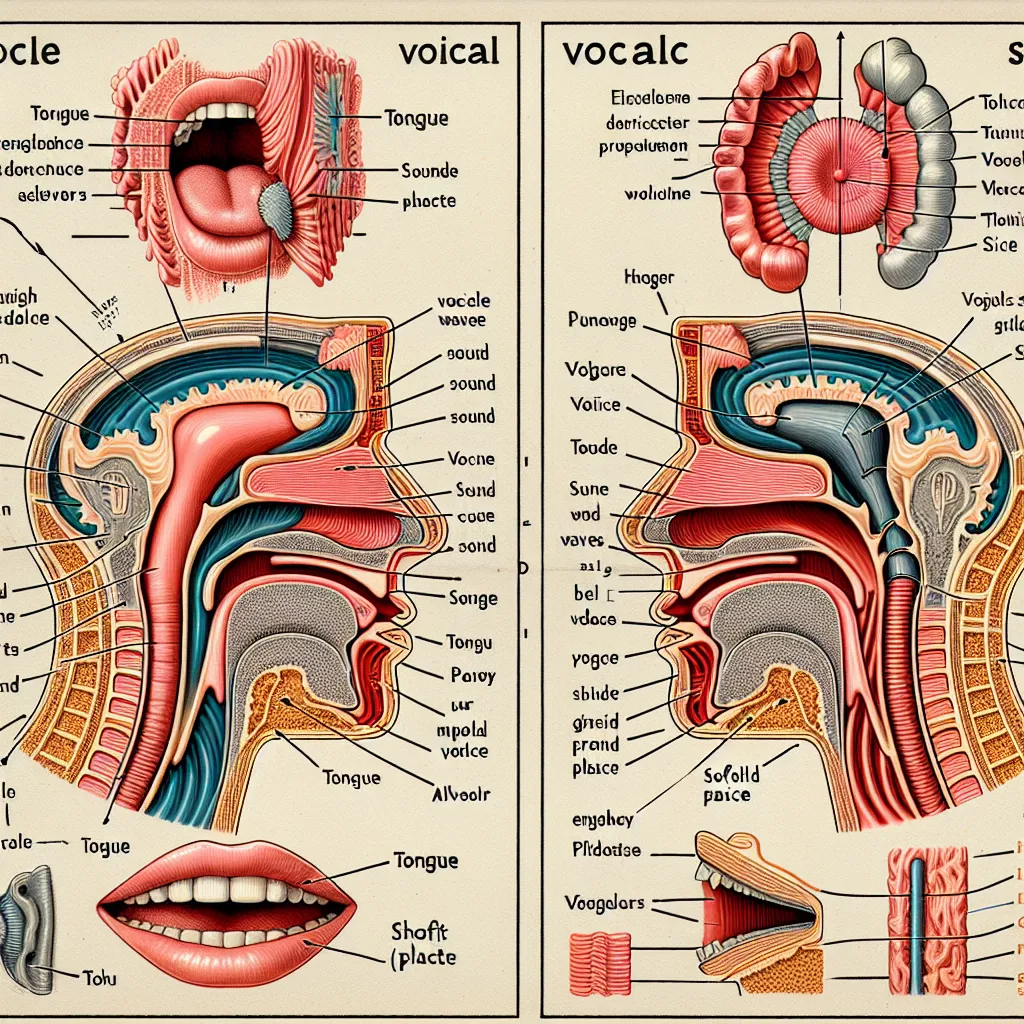Are you struggling to make yourself understood in English conversations? Do you find it challenging to pronounce certain words or sounds correctly? Mastering English pronunciation in real-life situations is crucial for effective communication and boosting your confidence when speaking the language. In this comprehensive guide, we’ll explore expert tips, strategies, and practical exercises to help you improve your English pronunciation and sound more natural in everyday conversations.
Understanding the Importance of Pronunciation in Real-Life Situations
Pronunciation is the foundation of clear communication in any language. In English, proper pronunciation can make the difference between being understood and facing confusion or misinterpretation. When you speak with accurate pronunciation, you not only convey your message more effectively but also gain confidence in your language skills.
The Impact of Good Pronunciation on Communication
Good pronunciation enhances your ability to:
- Be understood easily by native and non-native English speakers
- Understand others more effectively, as you become attuned to the correct sounds
- Improve your listening skills
- Boost your confidence in social and professional settings
- Reduce miscommunications and awkward situations
 Impact of English Pronunciation
Impact of English Pronunciation
Key Concepts in English Pronunciation
Before diving into specific strategies, it’s essential to understand some fundamental concepts in English pronunciation.
Phonemes: The Building Blocks of Pronunciation
Phonemes are the smallest units of sound in a language that can distinguish one word from another. English has 44 phonemes, including vowel and consonant sounds. Mastering these sounds is crucial for accurate pronunciation.
Stress and Intonation
English is a stress-timed language, meaning that stressed syllables in words and sentences are pronounced at regular intervals. Intonation, the rise and fall of voice pitch, also plays a significant role in conveying meaning and emotion.
Connected Speech
In natural spoken English, words often blend together, creating phenomena such as linking, elision, and assimilation. Understanding and practicing these aspects of connected speech can significantly improve your fluency and natural-sounding pronunciation.
Effective Methods for Improving English Pronunciation
Now that we’ve covered the basics, let’s explore some practical methods to enhance your pronunciation skills in real-life situations.
1. Listen and Imitate Native Speakers
One of the most effective ways to improve your pronunciation is by listening to and imitating native speakers. This method helps you internalize the correct sounds, rhythm, and intonation of English.
Tips for effective listening and imitation:
- Watch English movies, TV shows, and YouTube videos with subtitles
- Listen to English podcasts and audiobooks
- Use language learning apps that feature native speaker audio
- Practice shadowing techniques by repeating after native speakers in real-time
2. Use Pronunciation Apps and Online Resources
Numerous digital tools can help you practice and refine your pronunciation skills:
- Pronunciation apps: ELSA Speak, Google Translate, Duolingo
- Online dictionaries with audio pronunciations: Cambridge Dictionary, Merriam-Webster
- YouTube channels dedicated to English pronunciation: Rachel’s English, English with Lucy
3. Record and Analyze Your Speech
Recording yourself speaking English and then comparing it to native speaker pronunciations can be incredibly helpful. This method allows you to identify areas for improvement and track your progress over time.
Steps for effective self-recording:
- Choose a short text or dialogue to practice
- Record yourself reading it aloud
- Listen to a native speaker’s version of the same text
- Compare your pronunciation to the native speaker’s
- Identify differences and areas for improvement
- Practice and re-record until you’re satisfied with your pronunciation
 Self-Recording for Pronunciation
Self-Recording for Pronunciation
4. Practice Minimal Pairs
Minimal pairs are words that differ by only one sound, such as “ship” and “sheep” or “bet” and “bat.” Practicing these pairs can help you distinguish and produce similar sounds more accurately.
Example minimal pair exercise:
- Choose a pair of similar sounds, like /ɪ/ and /i:/
- Find a list of minimal pairs for these sounds (e.g., ship/sheep, hit/heat, fit/feet)
- Listen to native speaker pronunciations of these words
- Practice saying the words, focusing on the subtle differences in sound
- Ask a native speaker or language partner to give you feedback on your pronunciation
5. Focus on Mouth and Tongue Positioning
Pay attention to the physical aspects of pronunciation, such as mouth shape and tongue position. Many English learners struggle with sounds that don’t exist in their native language, so understanding the correct mouth and tongue placement is crucial.
Tips for improving mouth and tongue positioning:
- Use a mirror to observe your mouth shape when pronouncing different sounds
- Watch slow-motion videos of native speakers pronouncing challenging sounds
- Practice exaggerating mouth movements to help distinguish between similar sounds
Quick Tips for Improving Pronunciation in Real-Life Situations
-
Slow down: Speaking more slowly allows you to focus on proper pronunciation and reduces the likelihood of mistakes.
-
Emphasize stressed syllables: Pay attention to word stress and practice emphasizing the correct syllables in multisyllabic words.
-
Use pronunciation dictionaries: When in doubt, consult online pronunciation dictionaries to hear the correct pronunciation of unfamiliar words.
-
Join language exchange groups: Practice speaking with native English speakers and other learners to gain real-life experience and feedback.
-
Focus on rhythm and intonation: Practice speaking with natural English rhythm and intonation patterns to sound more fluent and native-like.
Common Pronunciation Mistakes and How to Avoid Them
English learners often struggle with certain sounds and pronunciation patterns. Here are some common mistakes and tips to overcome them:
-
Th-sound (/θ/ and /ð/): Many learners substitute these sounds with /s/, /z/, /t/, or /d/. Practice by placing your tongue between your teeth and blowing air out gently.
-
Vowel length: English has both short and long vowel sounds. Practice minimal pairs to distinguish between them (e.g., ship/sheep, cup/cap).
-
Silent letters: English has many words with silent letters. Learn common patterns and practice words like “knife,” “listen,” and “psychology.”
-
Word stress: Incorrect word stress can make words difficult to understand. Use online dictionaries to check the correct stress pattern for new words.
-
Consonant clusters: English allows multiple consonants to appear together, which can be challenging for some learners. Practice words with consonant clusters, such as “strengths” or “sixths.”
The International Phonetic Alphabet (IPA) and Commonly Mispronounced Words
Understanding the International Phonetic Alphabet (IPA) can greatly improve your pronunciation skills. The IPA provides a standardized way to represent the sounds of spoken language.
Here’s a simplified version of the English Phonemic Chart:
Consonants: /p/ /b/ /t/ /d/ /k/ /g/ /f/ /v/ /θ/ /ð/ /s/ /z/ /ʃ/ /ʒ/ /h/ /tʃ/ /dʒ/ /m/ /n/ /ŋ/ /l/ /r/ /j/ /w/
Vowels: /i:/ /ɪ/ /e/ /æ/ /ʌ/ /ɑ:/ /ɒ/ /ɔ:/ /ʊ/ /u:/ /ɜ:/ /ə/ /eɪ/ /aɪ/ /ɔɪ/ /əʊ/ /aʊ/ /ɪə/ /eə/ /ʊə/
Ten commonly mispronounced English words related to real-life situations:
- Comfortable (/ˈkʌmftəbəl/ not /ˈkʌmfərtəbəl/)
- Wednesday (/ˈwenzdeɪ/ not /ˈwednesdeɪ/)
- Clothes (/kləʊðz/ not /kləʊz/)
- Pronunciation (/prəˌnʌnsiˈeɪʃən/ not /prəˌnaʊnsiˈeɪʃən/)
- Jewelry (/ˈdʒuːəlri/ not /ˈdʒuːləri/)
- Espresso (/eˈspresəʊ/ not /ekˈspresəʊ/)
- Etc. (/et ˈsetərə/ not /ek ˈsetərə/)
- Particularly (/pəˈtɪkjələli/ not /pəˈtɪkjʊlərli/)
- Probably (/ˈprɒbəbli/ not /ˈprɒbli/)
- Mischievous (/ˈmɪstʃɪvəs/ not /mɪsˈtʃiːviəs/)
Practice these words regularly to improve your pronunciation in everyday situations.
Conclusion
Mastering English pronunciation in real-life situations is a journey that requires patience, practice, and persistence. By implementing the strategies and tips outlined in this guide, you can significantly improve your pronunciation skills and communicate more effectively in English. Remember to focus on both individual sounds and the overall rhythm and intonation of the language.
Continue to challenge yourself by seeking out opportunities to speak English in real-life situations, and don’t be afraid to make mistakes – they’re an essential part of the learning process. With consistent practice and a willingness to learn, you’ll soon find yourself speaking English with greater confidence and clarity.
For more tips on improving your English pronunciation, check out our articles on how to practice pronunciation with friends and how to improve pronunciation through real-world practice. Keep practicing, and you’ll be amazed at how quickly your pronunciation skills can improve!




